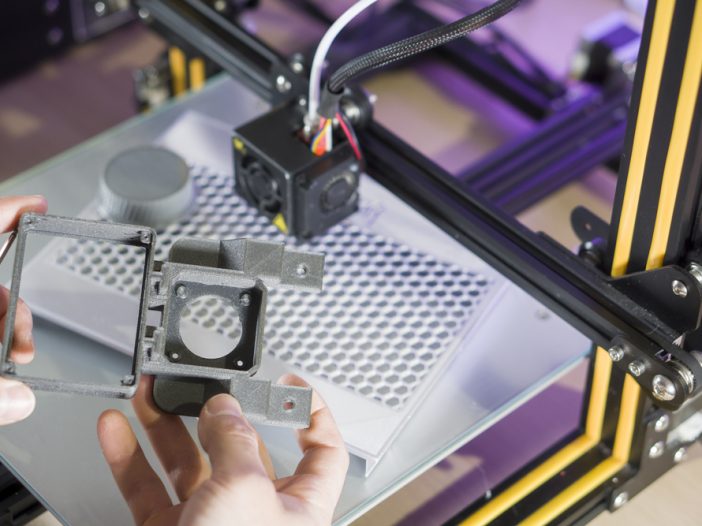
Companies launch multiple products every year, to help them gain attention. Prototypes are the samples of products the companies are going to launch. Rapid prototyping helps in carrying out successful fabrication.
The procedure uses digital 3D designs, and it’s more popularly known as 3D printing. Rapid prototyping helps you implement challenging designs, making it easy to create polymer-based models. This procedure helps create a prototype; thus, you will learn how to evaluate some parts.
A prototype is the primary version of the final product, and it gives you an idea of what the original product looks like. Therefore, a prototype is one of the most important parts of the product designing process and helps develop new products.
A Brief View of the Rapid Prototyping Procedure
First, you need to learn how rapid prototyping works. It’s important to know the cost, time, speed, and fidelity level to ensure you complete the procedure efficiently. RP uses multiple manufacturing technologies, and layered additive manufacturing is one of the most advanced technologies. RP uses casting, molding, extruding, and high-speed machining.
Apart from additive manufacturing, there are other processes to create prototypes. Other processes are:
- The compressive procedure uses a semi-solid or liquid material to give it a tailored shape. Before casting or molding, it’s essential to carry out the process.
- Subtractive is another procedure where the material is carved to give it the perfect shape. This procedure requires force to carve the material.
Overall, you get a clear idea of how experts create prototypes.
Detailed View of the Rapid Prototyping Techniques
Here is a detailed view of the techniques used for rapid prototype development:
Selective Laser Sintering (SLS)
This process helps you develop the functional sections from the polymer powder. The SLS parts have intense porosity, which may become brittle. However, they have good tensile strength, and it aids you in producing prototypes that last longer. This technology has a higher productivity rate and incurs a low cost.
Fused Deposition Modeling (FDM)
This procedure helps create 3D parts, and it’s one of the modern techniques to develop good prototypes. FDM involves melting, and then the thermoplastic resins are left to solidify. So the procedure helps you create long-lasting prototypes. Also, you will easily create prototypes of complex parts that give you confidence.
Binder Jetting
It’s one of the popular types of additive manufacturing technologies. It’s the best way to develop metal and plastic prototypes. Thus, you will learn how to create metal prototypes easily, and binder jetting involves the deposition of the binding agent into the powder bed. Gradually, it solidifies, and you will get a 3D prototype. This process is ideal for user test interaction and helps you develop the prototypes faster.
Multi Jet Fusion (MJF)
It helps produce 3D prototypes, and the fusing agent combines with the powdered material. Slowly, heat is applied to create prototypes, and the 3D model features the original look of the product. It produces accurate parts, and they are rigid enough. Also, they can create prototypes of the TPU parts, and you will get ultimate flexibility.
So, you get a clear idea of the rapid prototyping techniques and must choose a suitable option. Thus, you can eliminate all confusion, and a prototype gives you an overview of the final product.
Importance of Rapid Prototyping
Nowadays, companies develop new products to stay ahead of the competition. Hence, faster product development is gaining importance, and they must create prototypes. A prototype helps in handling the product development procedure easily. Rapid prototyping is an integral step of the modern product development process.
RP speeds up the product development process and helps validate the design. Thus, the final stage of product verification becomes easier, and you can meet business goals. Ensure you follow the guidelines; thus, you won’t have any difficulty developing a new product.
Types of Rapid Prototypes
Here you will get familiar with the types of rapid prototypes:
- A high-fidelity prototype resembles the look of the original product, and it has a similar function.
- A low-fidelity prototype is a simple type, and you can quickly produce a prototype.
Once you get an idea of the type of rapid prototypes, you will learn how to successfully carry out the prototype development procedure.
Benefits of Rapid Prototyping
Before you start executing the procedure, you must know the benefits:
Helps in Functional Testing
Testing is an integral part of the product development process. Continuous testing helps you eliminate chances of errors, and the final product will be perfect. Also, you will come up with new ideas that enable you to handle the development procedure flawlessly. Hence, you will help your business develop new products with smarter features.
Reduces Risks of Product Failure
Developing a good prototype reduces the risks of product failure. Once you start executing the testing process, you can identify the issues, and it helps you eliminate them. Therefore, it’s important to do a detailed evaluation of the product, and a prototype is required. Thus, you will feel confident about launching the product in the market.
Managing Product Development Cost
A prototype helps in carrying out the early product development stage efficiently. It saves time and also reduces product development costs. Cost reduction helps your business grow, and it even helps generate more profits. So, you get a good return on investment, and thus you will see how a prototype helps eliminate unwanted expenses.
Thus, you will feel confident in carrying out the product development procedure, and it helps your business promote the best product. In addition, experienced engineers know how to execute rapid prototyping techniques, and it helps companies to produce a perfect product.
Xcentric is the ideal place to handle rapid prototyping, and here you will meet expert engineers. They will give you consistent results, and the experts know how to implement the prototyping technologies. Thus, they help you develop the product faster. Furthermore, the expert engineers reveal details of the procedure, and you will learn the importance of using prototypes.